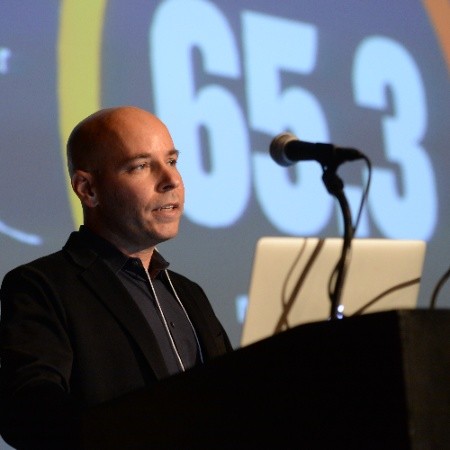When you want some fresh produce, it’s not too hard logistically to get it. You can go to the nearest local farmers market, join a CSA program, and if you’re lucky, you might even find it in your local supermarket. But what happens when you’re a $39 billion sales food service company with approximately 400,000 customers? Then, it might get a bit more complicated. Just ask Sysco.
Fast Company published a story last week about Sysco’s efforts to provide Michigan State University with more locally grown produce, a challenge that Sysco spent about three years to figure it out due to the logistical complexity of its operations. The result is not just fresh basil in the pesto sauce served at the University’s dining hall, but also a blueprint for local sourcing that Sysco began adopting elsewhere.
You might ask yourself what’s the big deal - after all this is not a game changer like Wal-Mart, which committed last year to double its sales of fresh produce from local farms in the U.S. by 2015. Well, it is a big deal because Sysco is America’s biggest restaurant supplier, providing both ingredients and prepared food to hundreds of thousands of and institutional customers such as hospitals and universities. Here’s the thing - if we like it or not the path to make local food mainstream doesn’t go only through farmers markets, but also (and maybe mainly) through food behemoths like Sysco.
Therefore it is important to understand the challenges Sysco is facing in its efforts to integrate local small suppliers into its system. More than anything, it is a story about scalability and efficiency, which actually are two elements the existing food system perfected to an art in the last couple of decades. Not surprising, these are also the main weaknesses of small local farmers that try to make their way into the supply chain of food companies.
Sysco’s local food supply blueprint was developed by its Grand Rapids produce manager Denis Jennisch, who was assigned to the Michigan State University’s case. After investigating and exploring the existing system as well as the capabilities of local farms, he finally found a way to integrate small local suppliers in an efficient way that will eliminate in a way their disadvantages and emphasize their comparative advantages.
It works like this: Jennisch gets in touch with local farmers before planting season, updating them on the distributor needs. Then he passes the list of the local farmers Sysco wants to work with to a local broker that places the orders for Sysco and collects the food from suppliers. When the produce is ready, farmers deliver it to the broker – if they’re close by, they do it directly and if they’re remote, they deliver it first to a ‘food hub’ and from there to the broker. The broker pays the farmers and consolidates their produce with those of other growers, coding it as local produce. Finally, Jennisch works to promote the local produce with Sysco sales reps and makes sure they’re prioritized, meaning that local produce needs to be sold out first before Sysco begins selling produce from other out-of-state suppliers.
This system is supposed to be a win-win model for the farmer, the broker and Sysco. The farmer has a better distribution system at his disposal, allowing him to grow and sell more produce, the broker has more consistency with the local supply and Sysco is able to provide more local food, meeting its customers’ growing demand to local food, and it also reduces its carbon footprint.
It is yet to be seen if local sourcing will be more profitable than traditional sourcing, but Sysco is already moving forward and implementing in other states, as the company reports on its 2011 sustainability report:
Responding to this powerful attraction, we now have well-developed local foods programs in at least 27 local Sysco operating companies and moderately developed programs in another 21 operating companies. To help advance this initiative across more of our local markets, we have launched a mentoring program and marketing tools where operating companies with well-developed programs partner with operators who wish to successfully integrate these programs into their business.
Even if Sysco’s majority of business continues to be based on foods traveling hundreds or thousands of miles between the field and the restaurant, I think Sysco should be commended for its efforts, because its approach, addressing local food’s weaknesses systematically, is the only way to change the existing food system. I hope Sysco will continue to address this issue systematically, increasing the number of small local farmers they work with and giving other large companies an example how small and local can still be efficient and beneficial.
Raz Godelnik is the co-founder of Eco-Libris, a green company working to green up the book industry in the digital age. He is also an adjunct professor in the University of Delaware’s Alfred Lerner College of Business and Economics.

Raz Godelnik is an Assistant Professor and the Co-Director of the MS in Strategic Design & Management program at Parsons School of Design in New York. Currently, his research projects focus on the impact of the sharing economy on traditional business, the sharing economy and cities’ resilience, the future of design thinking, and the integration of sustainability into Millennials’ lifestyles. Raz is the co-founder of two green startups – Hemper Jeans and Eco-Libris and holds an MBA from Tel Aviv University.














